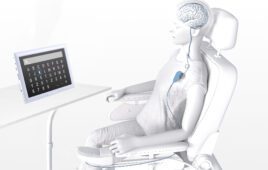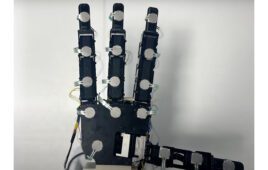 Swiss scientists from the Swiss Federal Institute of Technology helped paralyzed monkeys walk again with a neuroprosthetic interface that acts as a wireless bridge between the brain and the spine, according to a study published today in Nature.
Swiss scientists from the Swiss Federal Institute of Technology helped paralyzed monkeys walk again with a neuroprosthetic interface that acts as a wireless bridge between the brain and the spine, according to a study published today in Nature.
Researcher suggested that their method for regaining control of non-functioning limbs could one day lead to paralyzed people being able to walk again.
“The link between the decoding of the brain and the stimulation of the spinal cord – to make this communication exist – is completely new,” neurosurgeon Jocelyne Bloch, from the Lausanne University Hospital, told Reuters. “For the first time, I can imagine a completely paralyzed patient able to move their legs through this brain-spine interface.”
The team told the news outlet that they have started small feasibility studies in humans. But neuroscientist Gregoire Courtine of the Swiss Federal Institute of Technology cautioned that “it may take several years before this intervention can become a therapy for humans.”
According to the study, the interface works by collecting brain activity correlated to walking movements and relaying that information to the spinal cord, somewhere below the injury, using electrodes that stimulate neural pathways and activate leg muscles.
The team reported successfully treating two rhesus monkeys, each with paralysis in one leg as a result of a partial spinal cord lesion. One of the monkeys regained partial use of its leg within the 1st week of treatment, without training. The other took about 2 weeks to recover to the same point.
“We developed an implantable, wireless system that operates in real-time and enabled a primate to behave freely, without the constraint of tethered electronics,” said Courtine. “We understood how to extract brain signals that encode flexion and extension movements of the leg with a mathematical algorithm. We then linked the decoded signals to the stimulation of specific hotspots in the spinal cord that induced the walking movement.”
Simone Di Giovanni, a specialist in restorative neuroscience at Imperial College London, said the group’s results were “solid, very promising and exciting” also added a note of caution.
“In principle this is reproducible in human patients,” he said. “The issue will be how much this approach will contribute to functional recovery that impacts on the quality of life. This is still very uncertain.”




